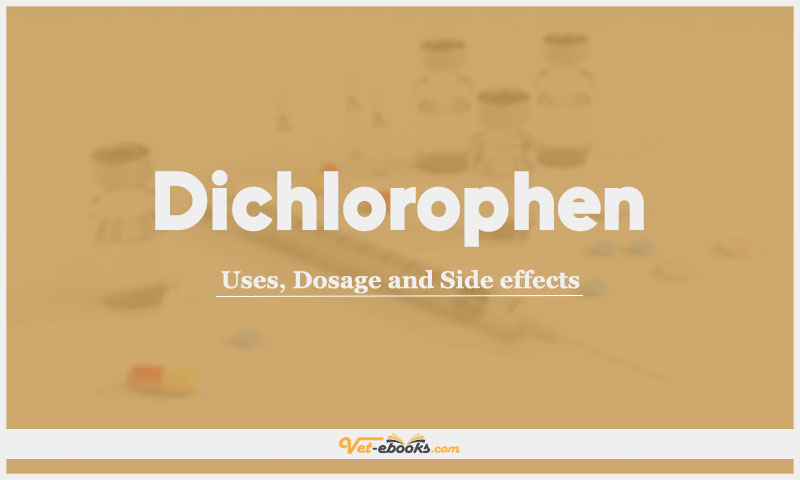Dichlorophen: Uses, Dosage and Side Effects

Overview
- Cestocide which acts by interfering with oxidative phosphorylation
Uses of Dichlorophen
- Control of tapeworm infections in dogs and cats >6 months old.
- Effective against Taenia and Dipylidium but not Echinococcus.
- Affected worms are dislodged and disintegrate during their passage along the alimentary tract so they are not easily recognizable when passed 6–8 hours after dosing.
- Administer tablets whole or crushed in food.
Dose of Dichlorophen in Dogs and Cats
Dogs, Cats:
- 250 mg total dose (dogs, cats <2.5 kg), 500 mg/2.5 kg (larger animals) p.o.
- Give a maximum of 6 tablets at once, and give the rest 3 hours later if there is no vomiting.
- The tablets are best administered immediately before the main feed of the day and may
be given whole or crushed and given in food. - Animals should be treated every 4–6 months.
Drug Dosage Calculator
You Should Give:
Side Effects of Dichlorophen in Dogs and Cats
- Vomiting may be seen.
- Rarely, salivation, hyperaesthesia, and loss of coordination.
Contraindications of Dichlorophen in Dogs and Cats
- Do not repeat the treatment if vomiting occurs shortly after dosing.
- Do not administer to animals weighing <1.25 kg or under 6 months of age.
- Do not repeat the treatment in <10 days.
Some Notes:
Formulations: Oral: 250 mg, 500 mg, 750 mg tablets.
Tip
Do You Want To Increase Your Veterinary Knowledge and Practical Skills?
You Can Now Browse and Download +3000 Books For Veterinary Professionals & Students Online.
Download Veterinary Books




















